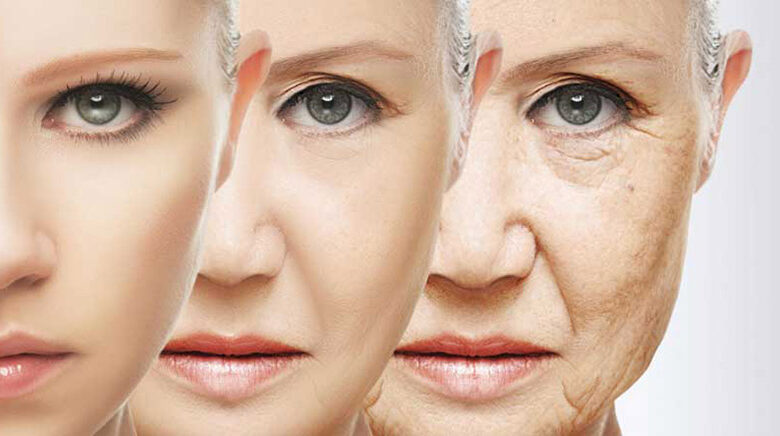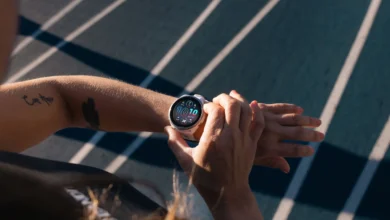Iot In Elderly Care Empowering Aging Populations

IoT in Elderly Care: Empowering Aging Populations is an evolving field that revolutionizes the way we approach the care of older adults. With the rise of the Internet of Things, we are now equipped with innovative tools and technologies that significantly enhance the quality of life for aging individuals. This approach not only fosters independence among seniors but also streamlines healthcare practices, allowing caregivers to provide more effective support and monitoring.
As IoT devices like wearables and smart home systems become increasingly integrated into daily life, they enable real-time health monitoring and improve emergency response capabilities, thus redefining how we think about elderly care. The importance of user-friendly design ensures that these technologies remain accessible, making it easier for older adults to engage with them and benefit from their features.
Introduction to IoT in Elderly Care

The Internet of Things (IoT) refers to the interconnected network of devices that communicate and exchange data over the internet. In the context of elderly care, IoT plays a crucial role, enhancing the quality of life for older adults by integrating technology into their daily routines. This integration not only fosters independence but also ensures timely assistance when needed.
IoT technology significantly improves the living conditions for aging populations by providing smart solutions tailored to their needs. From wearable health monitors that track vital signs to smart home devices that automate daily tasks, IoT enables seniors to live more comfortably and securely. The potential of IoT extends beyond individual benefits, as it can also revolutionize healthcare systems and the way caregivers operate. By providing real-time data and insights, IoT facilitates proactive care management, reducing hospital visits and ensuring that caregivers can respond promptly to any changes in a senior’s health.
Enhancing Quality of Life through IoT Devices
The implementation of IoT devices in elderly care offers various enhancements that directly impact seniors’ daily lives. These devices include:
- Wearable Health Monitors: Devices such as smartwatches and fitness trackers can monitor heart rates, notify users of irregularities, and even alert caregivers in emergencies.
- Smart Home Technology: Automated systems can control lights, heating, and security alarms, allowing seniors to manage their environments effortlessly.
- Medication Management Tools: Pill dispensers connected to smartphones remind seniors to take medication on time, ensuring adherence and minimizing health risks.
- Telehealth Services: IoT enables remote consultations with healthcare professionals, giving seniors access to medical advice without the need for travel.
The importance of these devices lies in their ability to empower seniors to maintain autonomy while providing peace of mind to caregivers and family members.
“Technology should enhance the independence of older adults, making them feel secure and connected.”
The potential impact of IoT technology on healthcare systems is profound. With the ability to collect and analyze data, healthcare providers can develop personalized care plans that cater to the specific needs of each individual. This data-driven approach leads to better health outcomes while also decreasing the burden on healthcare facilities.
Incorporating IoT in elderly care is a transformative step towards creating a more supportive environment for aging populations, where technology acts as an ally in ensuring their health, safety, and overall well-being.
Key IoT Technologies in Elderly Care
The integration of Internet of Things (IoT) technologies in elderly care is revolutionizing how we ensure the well-being and independence of aging populations. With a variety of devices designed to monitor health, facilitate communication, and enhance the overall living environment, these technologies play a crucial role in supporting seniors and their caregivers. The following sections explore the key IoT devices that are making a significant impact in elderly care.
IoT Devices in Elderly Care
A diverse range of IoT devices is available today, designed specifically for elderly care. These devices enhance safety, health monitoring, and communication, making them invaluable tools for both seniors and their families. Here are some notable examples:
- Wearables: Devices such as smartwatches and fitness trackers monitor vital signs, activity levels, and sleep patterns. For instance, the Fitbit series provides real-time heart rate data and reminders to move, directly benefiting seniors with sedentary lifestyles.
- Smart Home Systems: These include devices like smart thermostats, lights, and security cameras. For example, the Nest thermostat can learn a user’s heating preferences and adjust automatically, ensuring comfort while also being energy-efficient.
- Personal Emergency Response Systems (PERS): These devices allow seniors to call for help with the touch of a button. Brands like Life Alert provide wearable pendants that can connect to emergency services with ease, offering peace of mind to both users and their families.
- Medication Management Devices: Solutions like MedMinder can remind seniors to take their medications at scheduled times, reducing the risk of missed doses and improving adherence to treatment plans.
Functionality and Integration with Healthcare Systems
The functionality of these IoT technologies is advanced, often featuring seamless integration with existing healthcare systems. By collecting data on a senior’s health status and daily activities, these devices can provide actionable insights to caregivers and healthcare providers.
Integration occurs when IoT platforms communicate with electronic health records (EHR) systems, allowing for comprehensive monitoring and response strategies. For instance, when a wearables device detects an irregular heartbeat, it can automatically alert healthcare professionals, enabling timely intervention.
Moreover, platforms such as Apple HealthKit and Google Fit not only aggregate data from various devices but also enable sharing this information with healthcare providers, thus ensuring a holistic view of a patient’s health status. This connectivity ultimately enhances personalized care and promotes proactive health management.
Benefits of IoT for Aging Populations
The integration of Internet of Things (IoT) technologies into elderly care is transforming how we approach aging populations. It empowers seniors to maintain their independence while enhancing their overall quality of life. Understanding the benefits of IoT in this context is critical to appreciating its role in modern healthcare and daily living for seniors.
Promotion of Independence Among the Elderly
One of the most significant advantages of IoT for aging populations is the promotion of independence. IoT devices, such as smart home systems, allow elderly individuals to manage their environments without constant assistance. These systems can automate daily tasks, such as adjusting lighting or controlling temperature, enhancing comfort and self-sufficiency.
For instance, smart speakers can set reminders for medication, ensuring that seniors adhere to their health routines without relying on others. According to a study from the AARP, seniors with access to smart home technology reported a greater sense of autonomy and satisfaction in their daily lives.
Improvement in Health Monitoring and Emergency Response
The ability to monitor health conditions in real-time is another critical benefit of IoT in elderly care. Wearable devices track vital signs such as heart rate, blood pressure, and activity levels, allowing for continuous health monitoring. This data can be shared with healthcare providers, who can intervene promptly if any anomalies are detected.
In emergency situations, IoT devices can automatically alert caregivers or emergency services. For example, fall detection sensors can promptly notify designated contacts or medical personnel when an elderly individual falls, reducing the response time significantly. This proactive approach enhances the safety and well-being of seniors, ensuring they receive timely assistance when needed.
Comparison of Traditional Care Methods with IoT-Enabled Care Solutions
When comparing traditional care methods to IoT-enabled care solutions, the efficiency and effectiveness of IoT become apparent. Traditional methods often rely on scheduled visits from caregivers, which can lead to gaps in monitoring and support. In contrast, IoT technology provides continuous oversight and support, reducing the risk of neglect or delayed responses.
A study published in the Journal of Medical Internet Research indicates that IoT-enabled care solutions can lead to a 30% reduction in emergency hospital visits for seniors due to better management of chronic conditions. The ability to access real-time data allows for personalized care plans tailored to the individual needs of seniors, which is often not feasible with traditional care practices.
Overall, IoT technologies represent a significant advancement in elderly care, promoting independence, ensuring health monitoring, and providing a more effective alternative to conventional care methods.
Challenges and Considerations in Implementing IoT
The integration of Internet of Things (IoT) technologies into elderly care presents various challenges that must be navigated to ensure effective implementation. While the potential benefits are substantial, understanding the hurdles, particularly in privacy and security, as well as the need for user-friendly designs, is crucial for the successful adoption of these technologies.
One of the primary concerns in adopting IoT technologies for elderly care lies in the risk of data breaches and privacy violations. As healthcare increasingly relies on connected devices, protecting sensitive personal information becomes a paramount concern. The elderly population, often more vulnerable and less tech-savvy, may be particularly at risk if adequate security measures are not in place.
Privacy and Security Risks
The proliferation of IoT devices in elderly care raises significant privacy and security concerns. With devices collecting sensitive health data, it is imperative to establish robust security protocols to safeguard this information. Key points to consider include:
- Encryption of data: Ensuring that any data transmitted between devices and servers is encrypted to prevent unauthorized access.
- Regular software updates: Maintaining up-to-date software on devices to protect against vulnerabilities and exploits.
- User education on privacy settings: Providing clear guidance to elderly users to manage their privacy settings effectively.
“Protecting personal data is not just a regulatory requirement; it’s essential for maintaining trust in IoT technologies among elderly users.”
User-Friendly Design for Accessibility
The design of IoT devices and applications for elderly care must prioritize accessibility. Many elderly individuals may face challenges related to vision, hearing, or cognitive function that can hinder their ability to use technology. It is crucial to focus on user-friendly design principles, which include:
- Simple interfaces: Developing interfaces that are intuitive and easy to navigate, minimizing the cognitive load on users.
- Clear visual indicators: Utilizing large fonts, high-contrast colors, and clear icons to enhance readability and usability for those with visual impairments.
- Voice-activated controls: Implementing voice commands to allow hands-free operation, which can be particularly beneficial for users with limited mobility.
Incorporating these design elements not only improves user experience but also encourages greater adoption of IoT technologies among elderly individuals, ultimately enhancing their quality of care and independence.
Case Studies of IoT in Elderly Care

The integration of Internet of Things (IoT) technologies into elderly care has led to innovative solutions that enhance the quality of life for aging populations. Various organizations and communities have embarked on projects that effectively demonstrate the potential of IoT in monitoring health, ensuring safety, and providing autonomy to older adults. By looking at specific case studies, we can understand the tangible benefits and lessons learned from these implementations.
Successful Implementation in Assisted Living Facilities
One notable case study involves the implementation of IoT solutions in assisted living facilities managed by a senior care organization in California. The facility installed smart sensors in residents’ apartments to monitor movement, detect falls, and track daily activities. These sensors provided real-time data to caregivers, allowing them to respond quickly in case of emergencies. The outcomes included a significant reduction in emergency incidents and improved communication between staff and residents.
Additionally, the facility deployed wearable health monitoring devices that tracked vital signs such as heart rate and blood pressure. This data was shared with healthcare providers, ensuring timely medical interventions. The integration of IoT not only enhanced the safety of residents but also fostered a sense of independence, as residents felt more secure knowing that help was readily available if needed.
Community-Wide IoT Solutions
In another case, a community in the Netherlands implemented a comprehensive IoT strategy in collaboration with local healthcare providers and technology companies. This initiative focused on creating a smart living environment for older adults. The community used connected devices, including smart home systems, health monitors, and emergency response systems, to create a cohesive ecosystem that supported elderly residents.
The project emphasized social connectivity, with IoT devices facilitating communication between residents, family members, and healthcare professionals. Regular data analytics allowed for personalized care plans based on each resident’s health status and activity levels. The initiative resulted in higher overall satisfaction among residents and families, demonstrating how community-wide IoT solutions can enhance the well-being of the elderly.
Outcomes and Lessons Learned
The successful integration of IoT technologies in elderly care settings has yielded valuable insights. Key outcomes from these case studies include:
- Improved Safety: Real-time monitoring has led to quicker response times, reducing the incidence of serious health emergencies.
- Enhanced Autonomy: Older adults reported feeling more independent and secure with IoT solutions in place.
- Data-Driven Care: Continuous health monitoring allows for more accurate and timely medical interventions, leading to better health outcomes.
- Increased Engagement: Social connectivity through IoT devices has fostered a sense of community among residents, reducing feelings of isolation.
These case studies illustrate the transformative potential of IoT in elderly care. By leveraging technology to address the unique needs of aging populations, care providers can enhance safety, promote independence, and improve overall quality of life for older adults.
Future Trends in IoT and Elderly Care
The integration of IoT technologies in elderly care is continually evolving, with promising advancements on the horizon that aim to enhance the quality of life for aging populations. As technology becomes more sophisticated, the potential for personalized and proactive care increases, allowing for a more supportive aging experience. This segment explores the emerging trends that could revolutionize elderly care through IoT.
Emerging Trends in IoT Technologies
The landscape of IoT for elderly care is shaped by several key trends that enhance connectivity and improve the overall efficiency of care services. These trends are pivotal in developing systems that provide timely interventions, ensuring that elderly individuals receive the assistance they need when they need it most.
- Wearable Devices: Innovations in wearable technology are enabling real-time health monitoring. Devices that track vital signs such as heart rate, blood pressure, and activity levels are becoming commonplace, allowing caregivers to respond promptly to changes in health status.
- Smart Home Solutions: The integration of IoT devices in homes—like smart lights, thermostats, and security systems—creates a safer living environment for the elderly. These systems can be programmed to automate tasks and alert caregivers in case of emergencies.
- Telehealth Services: IoT facilitates remote consultations between healthcare providers and elderly patients. This trend allows seniors to receive medical advice without the need to travel, thereby reducing physical strain and exposure to potential infections.
- Predictive Analytics: By leveraging vast amounts of health data, predictive analytics can identify trends and forecast potential health issues before they arise, granting healthcare providers the opportunity to intervene early.
Advancements in AI and Machine Learning
Artificial Intelligence (AI) and machine learning are playing a crucial role in enhancing IoT applications within elderly care. These technologies have the ability to analyze data at unprecedented speeds, leading to more informed decision-making and personalized care strategies.
- Smart Assistants: AI-driven voice assistants can help elderly individuals manage daily tasks, medication schedules, and appointments through simple voice commands, fostering independence.
- Behavioral Analysis: Machine learning algorithms can assess an individual’s routine and identify deviations from normal behavior, alerting caregivers to potential health crises or safety concerns.
- Enhanced Data Security: With the rise in IoT devices, AI is essential in ensuring that sensitive health data is protected through advanced security measures, safeguarding the privacy of elderly patients.
- Personalized Health Plans: AI can tailor health and wellness recommendations based on individual health data, leading to more effective treatment plans and improved health outcomes.
Vision for the Future of Elderly Care
As IoT continues to integrate deeper into the fabric of elderly care, the future paints a promising picture of an interconnected ecosystem where seniors can live with greater autonomy and support.
The vision includes the establishment of fully automated smart homes equipped with IoT devices that efficiently monitor and manage health, safety, and comfort. Imagine a scenario where a smart home can detect a fall and automatically contact emergency services while also alerting family members—all in real-time. These homes would also feature AI companions capable of engaging in conversations, offering reminders for medications, and providing companionship to combat loneliness.
In healthcare settings, the proliferation of connected devices will facilitate a seamless exchange of information among healthcare providers, caregivers, and families, ensuring that everyone involved in a senior’s care is well-informed and coordinated in their efforts. Predictive analytics will play a central role in anticipating health needs, thereby transforming reactive healthcare into a proactive model focused on prevention.
Overall, the future of elderly care, powered by IoT and enhanced through AI, holds the potential to improve the quality of life for seniors, promote independence, and foster a safer and more connected living environment.
Best Practices for Implementing IoT Solutions
Implementing IoT solutions in elderly care demands a strategic approach to ensure their success and effectiveness. By adhering to best practices, healthcare providers can enhance the quality of care for aging populations while also streamlining operations within their facilities. These guidelines are fundamental in creating a supportive environment for both caregivers and the elderly.
Establishing a solid foundation for implementing IoT solutions begins with understanding the specific needs of elderly care, which helps in selecting the most appropriate technologies. Moreover, engaging with stakeholders—including caregivers, families, and tech providers—ensures a well-rounded perspective on the required features. Addressing their concerns about technology is also crucial in building confidence among users.
Guidelines for Healthcare Providers
To effectively implement IoT solutions, healthcare providers should follow these essential guidelines:
- Conduct a thorough needs assessment to determine the specific challenges faced by elderly populations in care settings.
- Evaluate existing infrastructures to identify compatibility with new IoT technologies, ensuring seamless integration.
- Prioritize user-friendly devices that require minimal training for both caregivers and elderly individuals.
- Implement robust data security measures to protect sensitive health information, complying with regulations like HIPAA.
- Establish clear protocols for emergency situations, ensuring IoT devices facilitate rapid response when needed.
Strategies for Educating Caregivers and Families
Educating caregivers and families about IoT technologies is vital for adoption and effective use. Employing the following strategies can help in this process:
- Provide hands-on training sessions that allow caregivers and families to interact with IoT devices, enhancing their comfort and familiarity.
- Create informational resources—such as pamphlets and videos—that explain the benefits and functionalities of IoT solutions in simple terms.
- Encourage open discussions where caregivers can share their experiences and address concerns about using technology in care.
- Utilize real-life case studies showcasing successful IoT implementations, demonstrating tangible benefits to bolster confidence.
- Offer ongoing support and refresher courses, ensuring that caregivers and families keep up with any updates or new features of the technology.
Framework for Evaluating IoT Effectiveness, IoT in Elderly Care: Empowering Aging Populations
To assess the impact of IoT implementations in elderly care settings, establishing a framework for evaluation is crucial. This framework should encompass the following components:
- Define clear metrics for success, such as reduced emergency incidents, improved medication adherence, and enhanced communication between caregivers and families.
- Regularly collect and analyze data from IoT devices to gauge their functionality and the quality of care provided.
- Solicit feedback from caregivers and families regarding their experiences and any areas for improvement.
- Benchmark against industry standards and best practices to identify areas where the care facility can improve its use of technology.
- Adjust strategies based on data insights and feedback, fostering a culture of continuous improvement within the care environment.
Last Recap
The discussion surrounding IoT in Elderly Care: Empowering Aging Populations highlights a significant shift in healthcare practices, transforming the landscape of elderly support. With ongoing advancements and increasing acceptance of IoT technologies, we stand at the brink of a new era where aging individuals can enjoy enhanced autonomy and a higher quality of life. As we navigate the challenges and embrace the best practices for implementation, the future of elderly care promises to be more connected, efficient, and compassionate.
Commonly Asked Questions: IoT In Elderly Care: Empowering Aging Populations
What is IoT?
IoT, or the Internet of Things, refers to the network of interconnected devices that communicate and share data to improve efficiency and convenience.
How does IoT improve elderly care?
IoT enhances elderly care by providing tools for health monitoring, emergency response, and facilitating communication between seniors and caregivers.
What are some common IoT devices used in elderly care?
Common IoT devices in elderly care include wearable health monitors, smart home systems, and fall detection sensors.
Are there privacy concerns with IoT in elderly care?
Yes, privacy concerns exist, as data collected by IoT devices can be sensitive; therefore, security measures must be implemented to protect user information.
How can families support elderly individuals using IoT?
Families can support elderly individuals by educating them about IoT devices, assisting with setup, and encouraging their use to enhance daily living.






